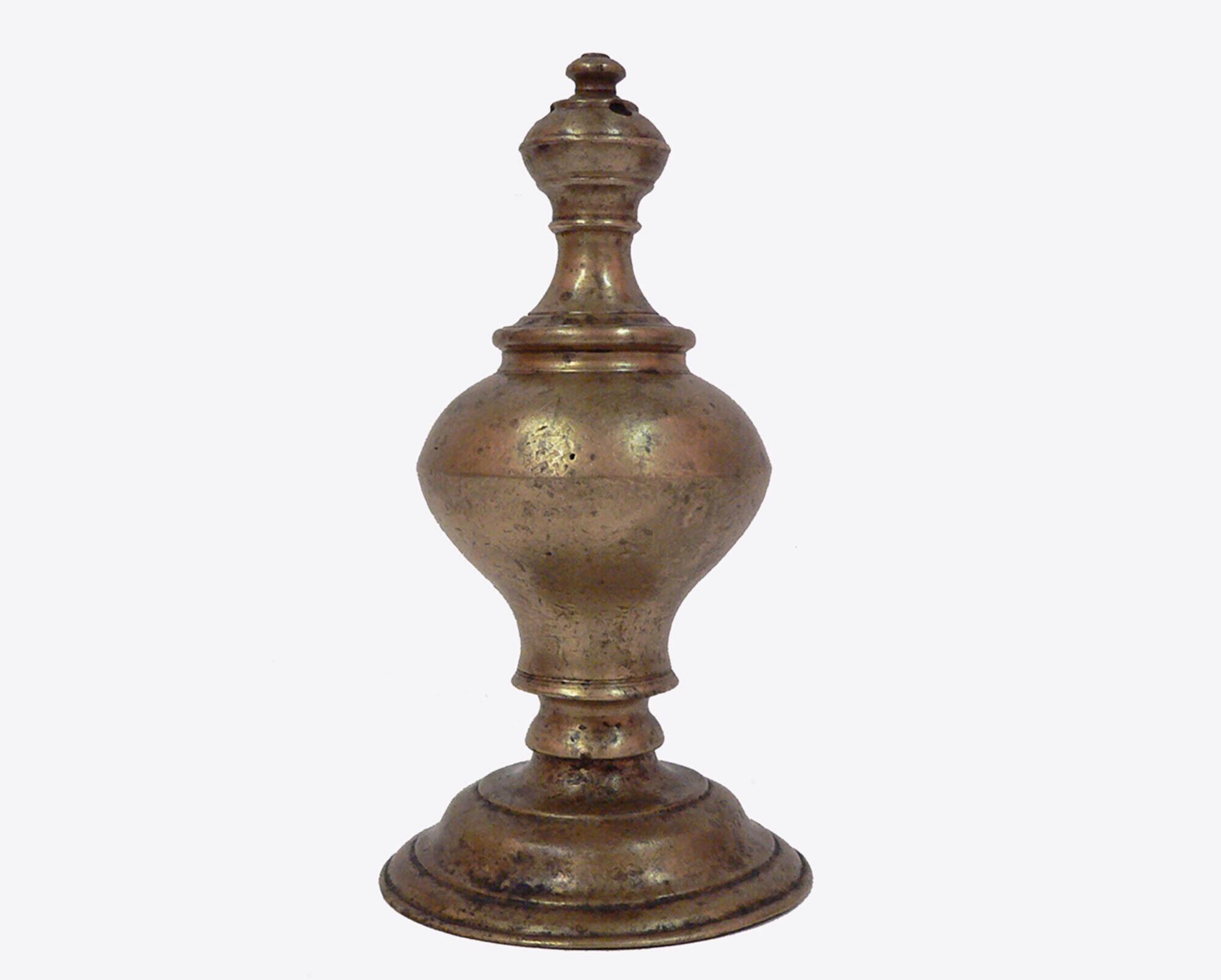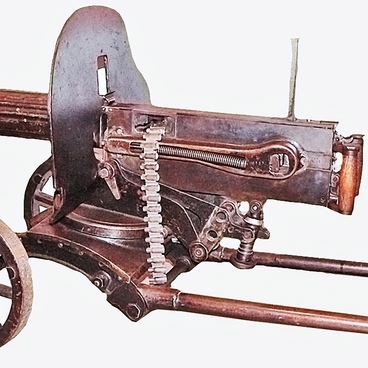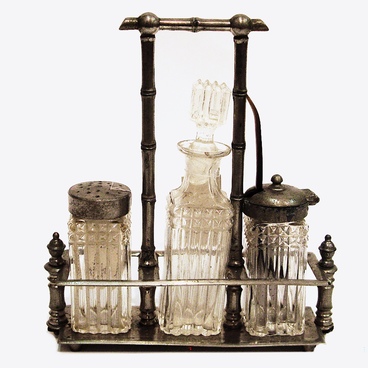The museum’s collection contains this component of an inkstand kit - a golden sander. It came to the collection from the Solvychevódsky district of the Vológda province.
Such a sander was needed to dry the ink. During the 17th-19th centuries, the set of writing materials included ink, quills, a sander, paper, pencils, and — in the era of goose feather quills — a penknife. With the advent of machine-made goose pens, as well as steel quills, fountain tips were included, as well as slate boards and slates. A knife was also usually included for cutting the pages of books and magazines - although it was not part of the actual writing utensils, it was typically used on the inkstand. The sander was usually the same shape as the paired inkwell. The difference was that the inkwell had a hinged lid, while the sander had a lid with numerous small holes. The sander existed as a component of stationary material from the 17th century to the beginning of the 19th century and was mentioned in literature.


